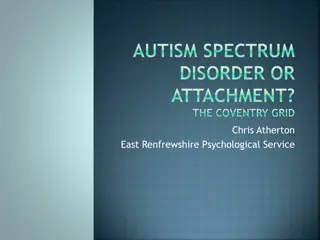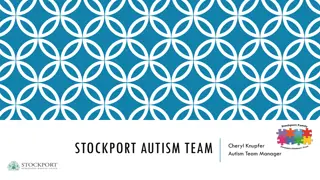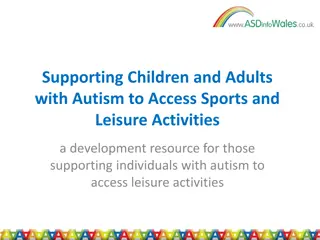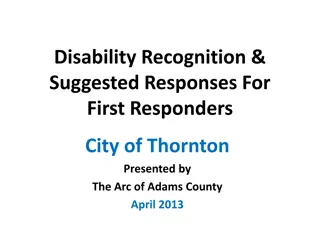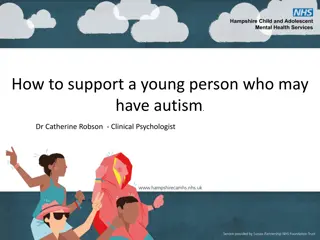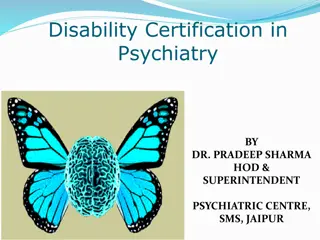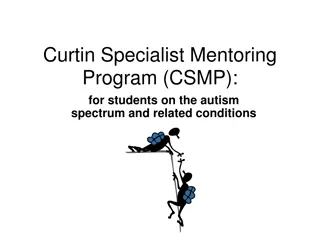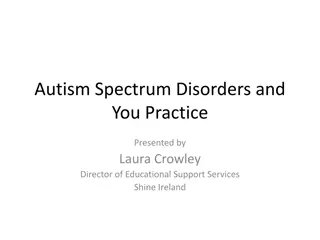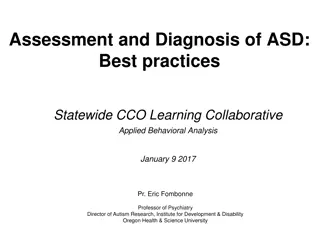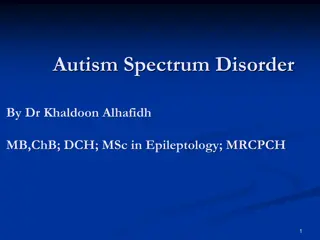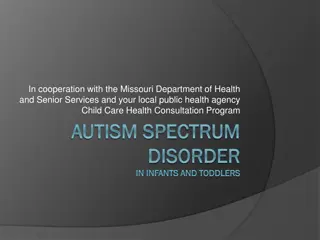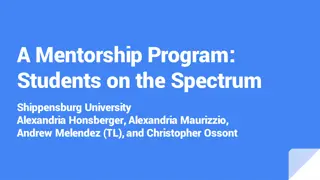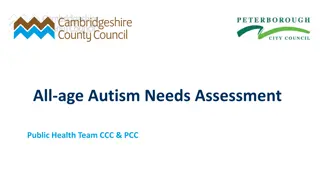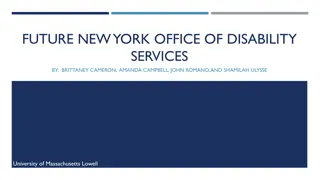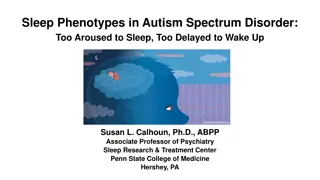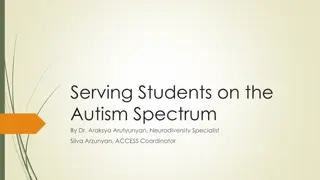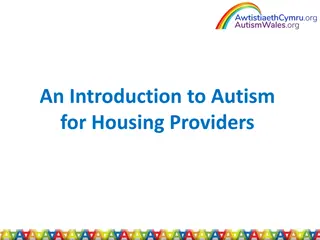Understanding Autism Spectrum Disorder in Education
Explore the characteristics of Autism Spectrum Disorder, debunk common myths, and learn about the challenges individuals with ASD face in social interactions, communication, and sensory processing. Gain insights into the educational implications of ASD and discover strategies to support students with ASD in academic settings.
Download Presentation

Please find below an Image/Link to download the presentation.
The content on the website is provided AS IS for your information and personal use only. It may not be sold, licensed, or shared on other websites without obtaining consent from the author. Download presentation by click this link. If you encounter any issues during the download, it is possible that the publisher has removed the file from their server.
E N D
Presentation Transcript
Teaching Students with Autism Spectrum Disorder Tiffany Leger-Rodriguez, Ph.D. Cal State Fullerton Road to Teaching Conference 2014 Santa Ana College
Welcome! Introduction KWL activity Characteristics of autism Autism and education Career paths in the field of autism Wrap-up
Characteristics of Autism Spectrum Disorder
Common Myths Everyone with autism is a genius Everyone with autism has an intellectual disability or low IQ People with autism don t want to be social or have relationships Children with autism are not affectionate
What is autism spectrum disorder? ASD is a disorder that appears within the first 3 years of life and affects the brain s normal development of social and communication skills. (US National Library of Medicine) Range of severity of symptoms can be severe to high-functioning
Characteristics of ASD Difficulty with social interactions Difficulty with verbal and non-verbal communication Difficulty with pragmatics, or the functional use of language Difficulty recognizing and comprehending social cues
Characteristics of ASD May be overly sensitive to light, sound, smell, or certain tastes and textures May become unusually distressed when routines are changed May repeat words or phrases, such as commercials May have difficulty with eye contact Difficulty with social cues (ex Everyone take out your math books! )
Characteristics of ASD May find normal noises painful and cover ears May have a heightened or lower response to pain Gets stuck on a single topic or task (perseveration) May be overactive or very passive Exhibits a strong need for sameness and routine
Autism Spectrum Disorder and Education
Discuss: What is required of children at school? What do children need to do in order to learn? What are some typical official rules at school? What are some typical unofficial rules at school?
Common School Difficulties for Students with ASD Attending to lessons and activities Lack learning to learn behaviors Comprehending verbal instructions Making friends Keeping friends Completing tasks Coping with change Coping with sensory issues Motor skills Abstract concepts Often a target for bullying
Where are students with ASD educated? General education classrooms Resource specialist settings Special education classrooms Private schools Nonpublic schools Charter schools Homeschools Online education programs
Tips for Teaching Students with ASD Keep language simple Maintain a highly structured environment Have a predictable daily routine Give fair warning of any routine changes when possible Avoid using sarcasm and idioms Use closed captions on videos when possible Recognize all behavior is a form of communication and avoid taking anything personally
Use special interests to facilitate learning
Use a rewards system for positive behavior
Use social stories to increase social comprehension and positive behavior
Career Paths in the Field of Autism and Education
Who works with students with autism? General education teachers Special education teachers Special education paraeducators Speech and language therapists Occupational therapists Adaptive P.E. teachers Cognitive therapists Inclusion specialists or autism specialists Behavior specialists




